-
Early American Sailing Ships
-
By Jerry Wilkinson
-
-
-
Size contributes much in determining a class for a ship, but the
configuration of the masts, sails and rigging is also important. Below
are some of the early American sailing ships, but are to to be used
only as a basic guide. All the silhouettes drawings were done by Charles
G. Davis.
JW
-
-
-
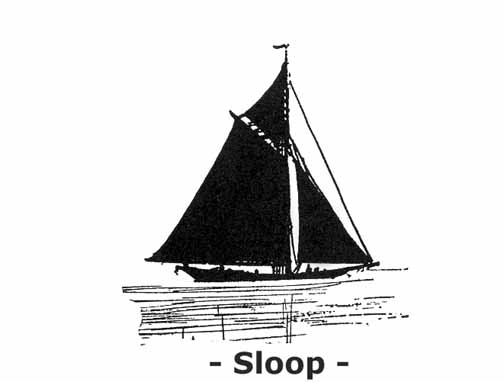
-
The sloop is a one-masted sailing vessel and can be very small or quite
large. The mainsail can be a triangle or gaff (the above) cut sail. When
sails are supported from a vertical mast it is said to be "fore and aft
rigged." When the sail is hung from a horizontal "spar" attached in its
center to the mast it is "square" rigged and the sail is called a "yard."
The sloop has no spars or yards and is fore and aft rigged. There is no
limit to the number of jib sails, but two is normally the limit. The configuration
of jibs usually does not alter the classification of a vessel. As there
is only one mast, the size of the hull is limited to the size of of the
mainsail. The top of a sail is the "head" and the bottom is the "foot."
Technically all masts, booms, gaffs, etc. can be called spars.
-
-
-
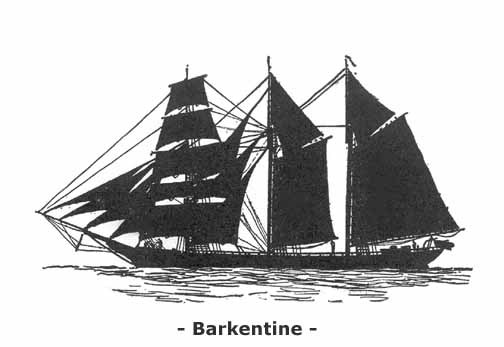
-
A barkentine has at least three-masts and is rigged with square sails
(yards hung on horizontal spars) on the foremast. The mainmast and the
mizzenmast are fore and aft rigged. Usually the third mast (after) is called
the mizzenmast. (Yawls and ketches are the exception.) If the mainmast
is square rigged also it becomes a "bark."
-
Masts (vertical spars) are named from bow to stern and usually called:
foremast, mainmast, mizzzenmast, jiggermast and spankermast.
-
-
-
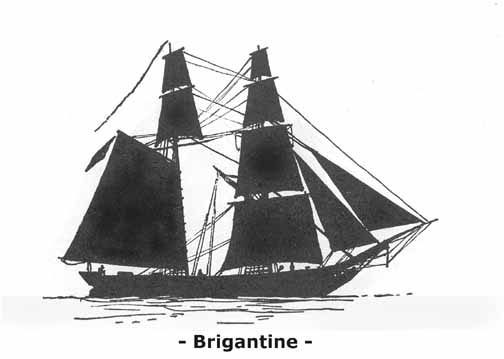
-
This is one of the two masted ships. The foremast is square rigged,
but note the mainmast. The mainsail is fore and aft rigged and the top
sails (yards) are square rigged. If there are three main yards it is a
topgallantsail.
-
-
-
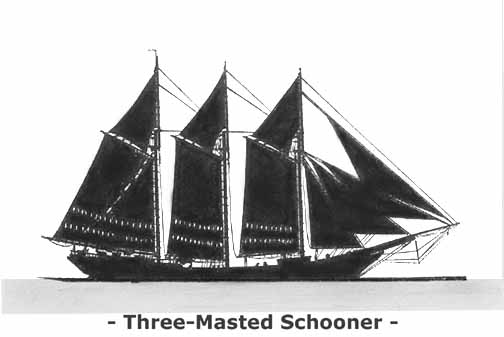
-
Multiple masted sailing vessels that are "fore and aft" rigged are schooners.
The most masts ever used were seven.
-
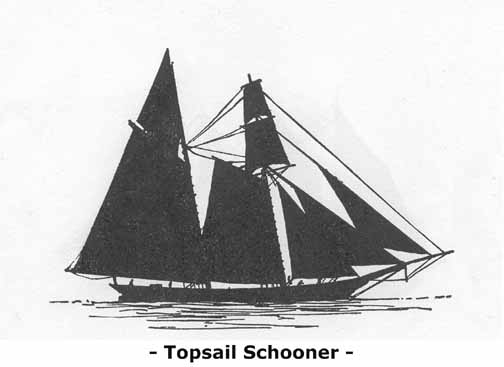
-
A variation of the schooner is the topsail schooner. The foremast and
rigging is the same as the mainmast of a brigantine.
-
-
-
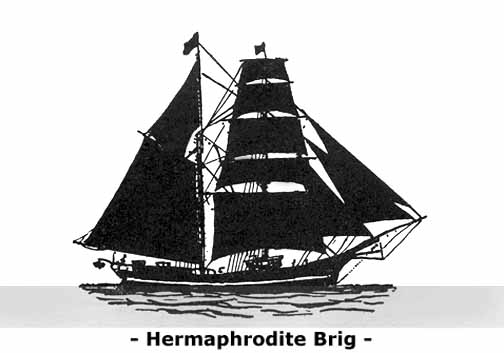
-
Another combination is to use the foremast of a brig (yards) and the
mainmast (fore and aft) of a schooner. This half brig - half schooner requires
less crew to operate.
-
-
-

-
A bark has square rigged sails on the foremast and mainmast, and the
mizzenmast is fore and aft rigged. An additional square rigged mast (a
total of four) was common.
-
-
-
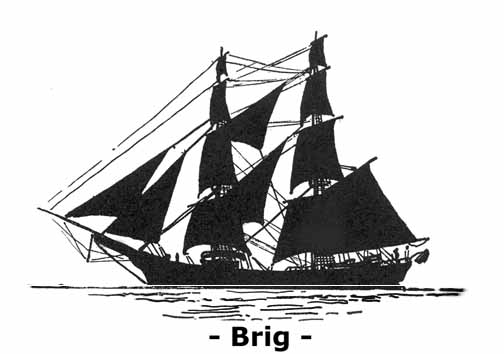
-
This is a two masted square rigged vessel with a "standing" gaff on
the mainmast from which a single fore and aft sail is rigged. This sail
is sometimes called the "spanker." There are variations and the above
is the full-rigged brig.
-
-
-
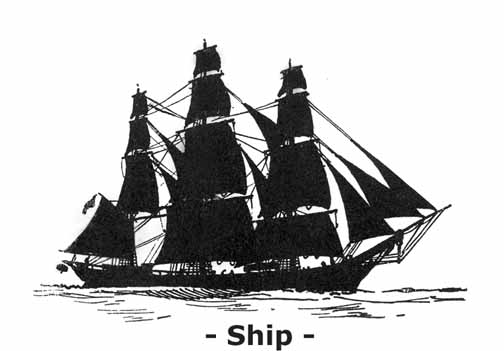
-
The term "ship" is used loosely and applied quite generally to all vessels
regardless of size, rig or power. The proper use is for a full-rigged vessel
of a minimum of three masts and mostly square rigged.
-
For a companion page of Early Spanish
Sailing Vessels, Click HERE.
Use Back Arrow to return to reading previous page or:
Go to a quick look-up Index, Click
HERE.
|









